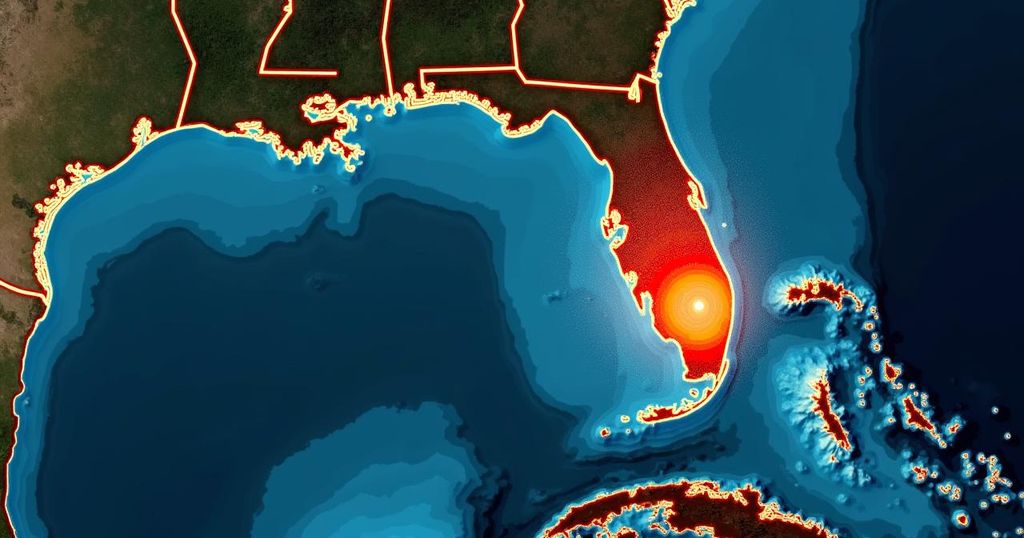Hurricane Helene’s Destructive Path Across Florida and Georgia

Hurricane Helene struck Florida as a Category 4 storm, causing widespread damage, power outages for over 4.5 million residents, and at least 22 reported fatalities. The storm weakened as it moved inland, impacting several states including Tennessee and North Carolina, where evacuations were ordered due to rising waters and dam failures. Helene is the first Category 4 hurricane to affect the Big Bend area since 1851 and the 22nd of its kind recorded in the U.S. since 1920.
Hurricane Helene made landfall as a substantial Category 4 hurricane in the Big Bend region of Florida on Thursday evening, resulting in extensive power outages affecting millions and causing significant flooding as it progressed through Georgia and into the Carolinas. The storm, which reached wind speeds of 140 mph near Perry, Florida, marked a notable event as it was the first Category 4 hurricane to impact the Big Bend area since 1851, according to reports from USA TODAY. As assessments of the wind and flood damage continue in Florida, attention is now turning to the storm’s effects further north. As of Friday, at least 22 fatalities have been reported, along with over 4.5 million individuals experiencing power outages across six states, including Tennessee and Virginia. Helene’s intensity diminished rather rapidly after landfall, with the National Hurricane Center classifying it as a tropical storm by 11 a.m. ET on Friday, with sustained winds recorded at 45 mph. At that time, the storm was situated approximately 30 miles southwest of Bryson City, North Carolina, and around 105 miles north-northeast of Atlanta. In Newport, Tennessee, emergency situations arose as residents were instructed to evacuate due to the failure of the Waterview Dam, triggered by the rising waters associated with Helene. Authorities were also conducting evacuations in Cocke County along the Pigeon and French Broad rivers, reflecting the storm’s widespread impact. North Carolina faced similar challenges with significant rainfall leading to potential dam failures, including the Lake Lure Dam. Helene is noteworthy as the 22nd Category 4 hurricane recorded in the United States since 1920. Comparatively, only four hurricanes of Category 5 intensity have occurred during this same timeframe, indicating the severity of Helene’s classification. The complete extent of the damage caused by Hurricane Helene will require considerable time for assessment. Historical precedents show that hurricanes inflict billions of dollars worth of damage, encompassing flooding, structural impairment, and prolonged power outages.
Hurricane Helene’s impact along the southeastern United States underscores the growing concerns about hurricane intensity and frequency, particularly with climate change considerations. The Big Bend region of Florida has not experienced a storm of this magnitude in over a century, which showcases the unpredictable nature of such natural disasters. The storm’s life cycle, from landfall at Category 4 to its subsequent downgrade, illustrates the typical behavior of hurricanes as they traverse land rather than water. The severe consequences observed, including evacuations and power outages, reflect the system’s capacity to disrupt daily life significantly.
In conclusion, Hurricane Helene has proven to be a catastrophic event for the states affected, highlighting the destructive power of high-category hurricanes. With landfall marking the beginning of significant flooding and wind damage, the implications for emergency management and infrastructure resilience are substantial. As assessments continue, the lessons learned from Helene’s impact will be crucial in preparing for future storms.
Original Source: www.usatoday.com








